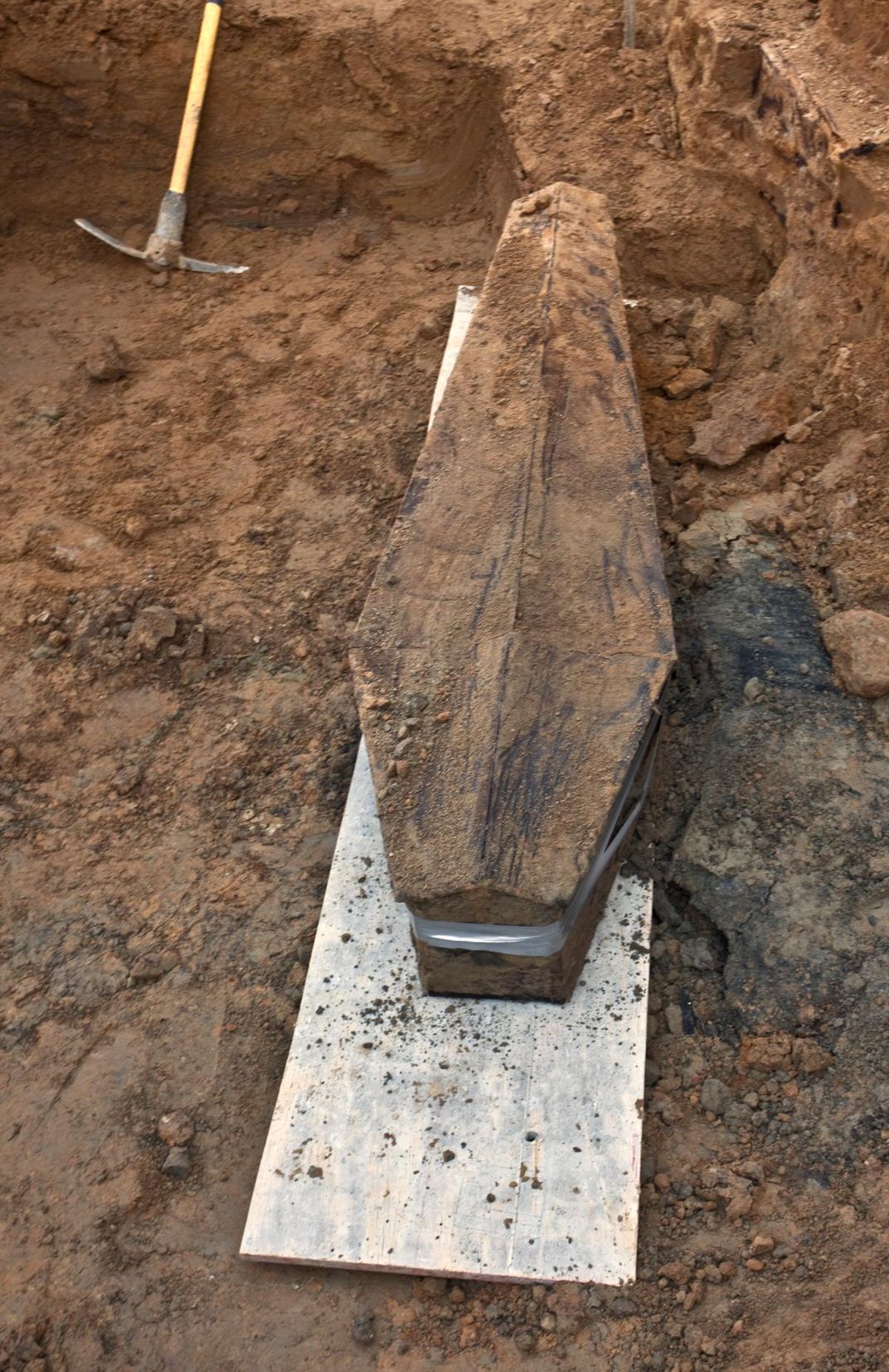Archaeologists Worked Feverishly to Excavate Colonial-Era Graves at Philly Construction Site
The First Baptist Cemetery was supposed to have been moved in 1859, but as it turned out many of the graves were left behind
/https://tf-cmsv2-smithsonianmag-media.s3.amazonaws.com/filer/27/34/2734cc1c-17b2-4b51-8bdd-f94bd2649b12/2017_03_09_999_237_g111.jpg)
Human remains from the Colonial era were first discovered in Philadelphia’s Old City last November by construction workers. They came across the bones under a parking lot they were removing for a new mixed-use development. Following the discovery, the developer, PMC Properties, agreed to preserve and rebury the initial findings. Work continued on the site. Then, in late February, the number of human remains increased significantly after crew members found an area of the site full of coffins, reports Stephan Salisbury at Philly.com.
A group of volunteer archaeologists and anthropologists headed by forensic anthropologist Anna Dhody of the Mütter Institute at the College of Physicians of Philadelphia then sprang into action. PMC Properties initially gave the group until March 11th to remove the remains, and then extended the deadline until Monday night. “We’re trying to be respectful of what is found there, bearing in mind that this is an active construction site,” Jonathan Stavin, PMC executive vice president tells Salisbury.
On Monday, Dhody told Smithsonian.com that the team had unearthed 77 fully intact human remains. According to Amanda Morris at CNN, the construction site is the former burial ground of Philadelphia’s First Baptist Church, which first occupied a nearby church in 1707. Records indicated that the graveyard was decommissioned and the bodies moved across the city to the Mount Moriah Cemetery around 1859. However, the discovery of the coffins means some of the graves were missed or the job was not fully completed. “Businesses decide to cut corners," as Lee Arnold of the Historical Society of Pennsylvania puts it to Morris.
Dhody put out a call to archaeologists and forensics experts from around New England to ask for help with the whirlwind excavation. “These are our ancestors. This is our history," she tells Salisbury. "We can learn so much from these bones — about the yellow fever epidemic in 1793, the cholera epidemic of 1849."
Kimberlee Moran, forensics expert at Rutger University-Camden, tells Brian Hickey at Philly Voice that in areas with clay soils the coffins are in almost pristine conditions. In parts of the former cemetery with acidic soils only outlines of the burials are left where the coffins and remains have completely disintegrated.
The researchers say they are grateful for the chance to exhume the remains. “We'd love to do an archaeological excavation, but we have to be realistic,” Moran tells Hickey. “We could easily be here for months, but we're doing the best we can.”
In fact, Dhody thinks the cooperation between the archaeologists and developers, who are often in conflict at project sites, is a plus. “This is a positive thing for any possible future projects because we’re training them to look for future archeological sites,” Dhody tells Morris. “Philadelphia is a historical city. It’s not the first time something like this has happened and it won't be the last. Construction workers are our first line of eyes. Getting them involved and interested is key to preserving our history.”
Not everyone is happy with the situation, however. Douglas Mooney, president of the Philadelphia Archaeological Forum tells Salisbury that the effort was “salvage archeology.” The Philadelphia Historical Commission, The Pennsylvania Historical and Museum Commission and the Orphans’ Court, which handles abandoned cemeteries, all claim they have no jurisdiction over the site and cannot order a more detailed excavation reports Salisbury.
Moran tells Smithsonian.com that now that phase one is over, they will look into fundraising, possibly through Kickstarter, to fund phase two to examine the remains to learn the sex, age and other characteristics of the deceased. Eventually, they will transfer the remains to Mount Moriah Cemetery for burial, just as they were supposed to have been taken 150 years ago.
